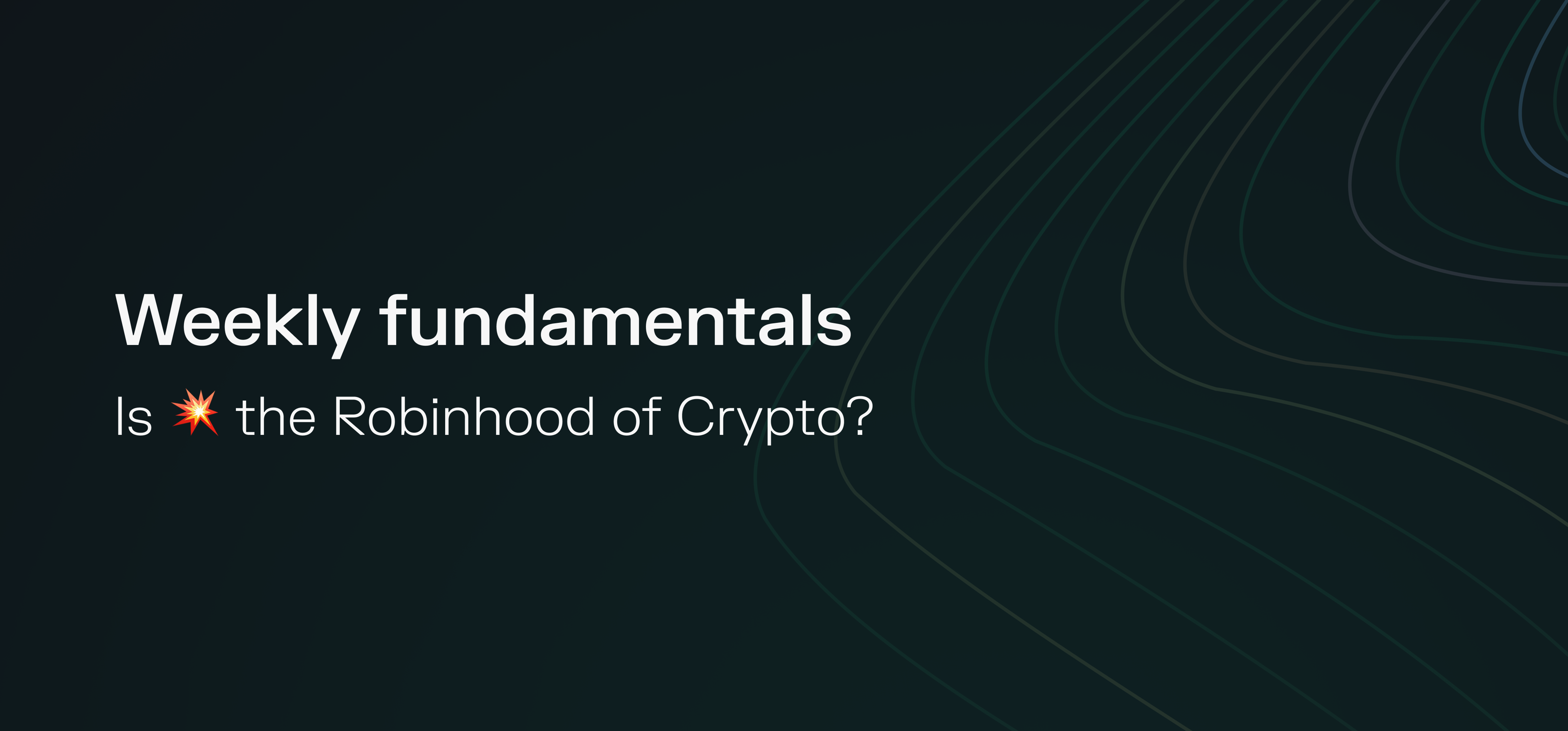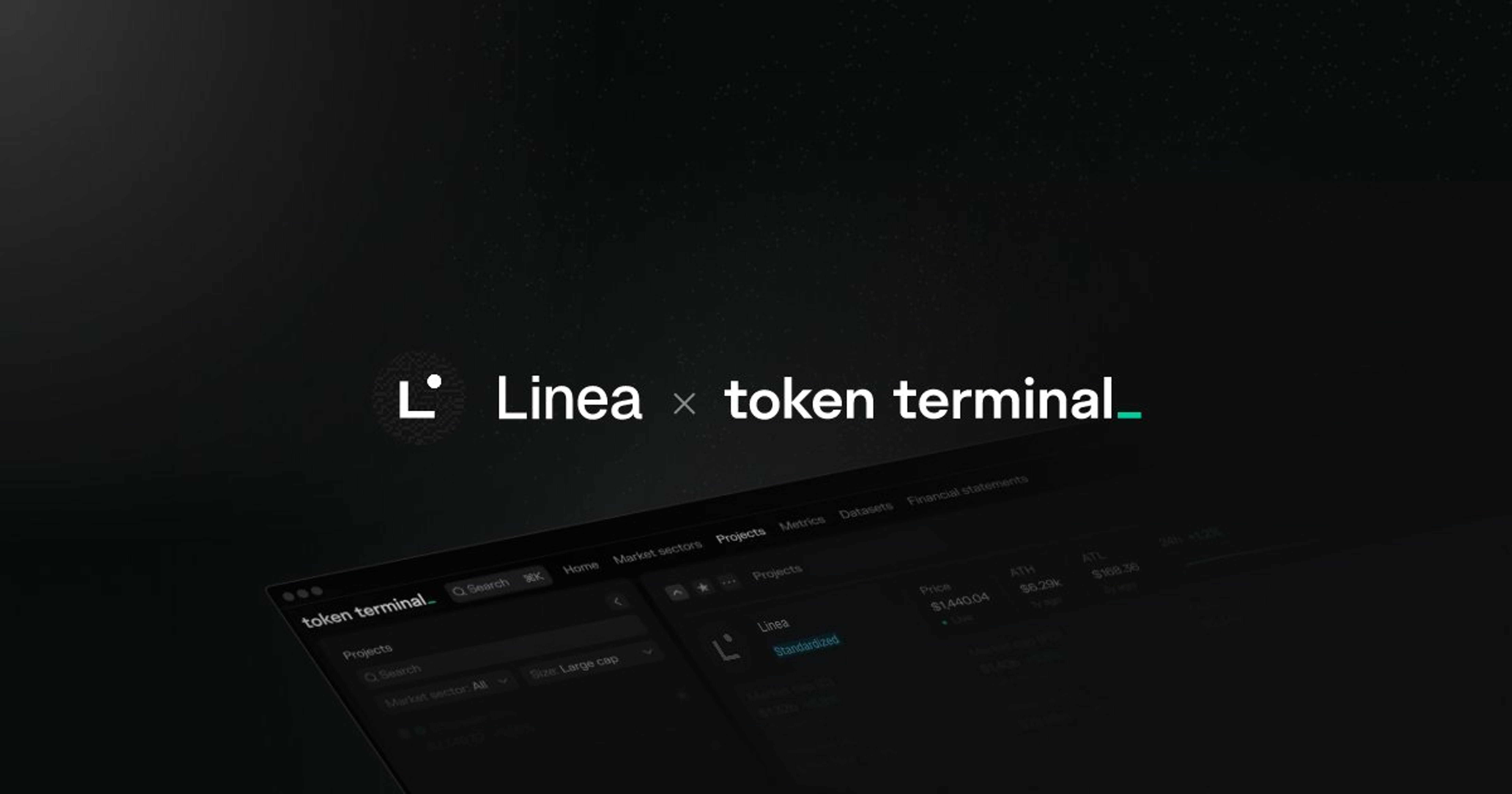Newsletter
A weekly data digest for the leading crypto investors and operators.

Introduction
This week’s newsletter covers Blast, an Ethereum L2 juggernaut launched by Pacman, the founder of Blur. Blast has been in the Crypto Twitter spotlight recently, having amassed ~$3B in user deposits only a few weeks into the launch of its L2 blockchain. In this week’s article, we go through the protocol’s origin story and its unique business model, review its core onchain KPIs, and finally, consider what the future might hold for Blast.
Let’s dive in!
What might have motivated the launch of Blast?
- Blur needs an L2 to scale. As an NFT marketplace, Blur cannot succeed in the long-term as long as it is deployed only to the Ethereum L1. Compared to two years ago, it has become a lot easier to launch rollups and Blast is able to leverage the Blur brand and distribution to bootstrap the L2 ecosystem. Once Blur launches on Blast, it’ll likely get a “Hub status” on the L2, given that the two entities share the same founder. Not unlike how protocols that get endorsed by Vitalik more naturally become a part of the Ethereum core (e.g. ENS).
- Blur as a spot exchange needs the assets to be located specifically on its chain. Similar to Uniswap, another spot exchange, Blur needs the specific assets to be located on the same chain where its exchange contracts are deployed.
- Uniswap has (to date) chosen the strategy of deploying “wherever the assets are”.
- Blur with Blast, seems to be going for the alternative model of “attracting the assets to where they are”.
- Derivatives exchanges like dYdX, do not have to think about this as much, since they only need the collateral asset, e.g. USDC, on their chain, and all other assets can be “brought on to the platform” via a price feed.
- There’s big money to be made by launching a general-purpose L2. Regardless of the success of Blur, Blast has the potential to join the “L2 Summer” that’s brewing on top of Ethereum. Given the $20B+ valuations of leading L2s, such as OP and ARB, the L2 route presents itself as a potentially compelling opportunity for the team and early backers. Why isn’t Blast instead an appchain launched by Blur?
One interesting thing to note is that Pacman, the founder of Blur and Blast, runs two early-stage and high-growth protocols at the same time – even if through two separate teams. Based on the funding announcements, the two entities seem to share many of the same early investors. To date, we’ve not seen much talk about potential conflicts of interest between Blast and Blur, but it’s not entirely unreasonable to expect some economic tension between the two, especially if the stakes start to go up from here.
Blast moved fast and broke CT’s expectations
- Blast’s go-to-market strategy embodies the lean startup approach. “Get the MVP out fast and iterate from there.” In Blast’s case, the MVP of their L2 was a multisig that amassed billions of user assets in a short period of time. This locked up liquidity immediately put them in a better position to attract developers to build on Blast.
- Blast pulled off one of the most successful launch campaigns for an L2. The marketing toward developers was organized through a pitching competition called “Big Bang”. The extra incentive for both sides of the marketplace – depositors (demand-side) and developers (supply-side) – was the promise of a (substantial) future airdrop.
- Blast quickly outgrew many of the incumbent L2s. In four months alone, Blast has managed to attract close to $3B in user deposits. The chain went live in late February, and is already the home to ~280k monthly active users.
Blast introduces a unique product among L2s: native yield
- Blast is a general-purpose L2 with built-in ‘asset management’. To stand out from the rapidly growing crowd of general-purpose L2s, Blast adopts a model of native yield, which means that the chain invests user assets to Lido and Maker to earn yield in the form of staking rewards and T-Bill interest.
- Blast makes use of the “Robinhood/Fintech” playbook by passing on the yield to users as “free” services. Because of the native yield, Blast can offer its users certain products for “free” (free gas, free swaps, etc.). These are of course not free, but instead UX optimizations, enabled by Blast’s decision to re-invest idle user funds.
- Blast’s capital efficient operating model attracts capital. In terms of bridge deposits, Blast has emerged as the #3 L2 protocol, only behind category leader Arbitrum ($11.7B) and Optimism ($5.7B). The current composition of Blast’s ~$3B in bridge deposits: $2.5B stETH, $180M DAI, and $200M ETH.
Blast leverages existing rollup building blocks & money legos
- Blast is an Ethereum L2 built on a modified version of the OP Stack. Note that Blast is not, at least initially, part of Optimism’s Superchain. The availability of “plug & play” rollup stacks allows developers to put more focus on servicing customers vs. building blockchains, which should lead to better products and increased user adoption.
- Blast seeks to expand to multiple business lines. The Blast L2 has a native stablecoin called USDB. Users that bridge stablecoins to Blast get USDB in return, while the bridged stablecoin is deposited to Maker to earn yield. The documentation states that there’s an option to replace Lido and Maker (where user assets are currently invested to generate yield) with inhouse products down the line. Worth noting that the Blast team includes members who’ve previously worked for Maker and its lead investor, Paradigm, is also the biggest outside investor in Lido.
- Time will tell how feasible this vertical integration plan actually is. To date, no one has successfully forked Maker, and Lido is on the path of becoming too-big-to-fail on Ethereum. However, should Blast amass TVL in the tens of billions, the team could have the technical capabilities to rebuild Lido and Maker inhouse – whether that’s a good investment of their time and resources is another question.
A Blast-native application ecosystem in the making
- Blast aims to build a Blast-native developer community. Instead of attracting existing blue chip protocols, Blast has been intent on building a community of Blast-native applications vs. going after existing blue chips like Uniswap and Aave. This could very well be motivated from a growth flywheel perspective, since new applications → new tokens → new users looking for airdrops.
- Blast’s Big Bang pitching competition garnered submissions from over 3,000 projects. However, having reviewed the current application ecosystem, we’ve yet to come across applications that would’ve implemented unique mechanisms. Realistically, it’s likely that an ecosystem of unique, Blast-native applications (i.e. not forks of existing blue chips) will take several months, if not years, to form.
- The most used contracts on Blast belong to d’exchanges and lending protocols. Based on gas usage (30d), we can spot a few exchanges like Thruster and Ambient that seem to have attracted the most usage on the chain. On the lending side, projects like Orbit and Juice are among those that have amassed the most user deposits.
The Computer vs. the Casino (on Mars)
- Blast’s heavy focus on speculation does not mean it’s the protocol’s endgame. Paradigm’s Casino on Mars thesis states that crypto as a new frontier naturally attracts speculators among those who are looking to settle in. Blast’s promises of substantial airdrops, gamified points programs, alongside a dedicated focus on marketing them certainly makes it fit the mold. However, we’ve seen many instances where startups change their product and brand focus down the line – the same could also happen here, or it might not need to happen, should the current “Casino model” turn out to be economically sustainable.
- Blast’s cohort data will be an interesting KPI to follow. While the first cohort does not tell us much, yet, the retention rate is on track to be the highest among L2s. An interesting benchmark for Blast is Base, for which many believe that an airdrop is an inevitable future outcome, even if Coinbase has publicly stated that they are not going to launch a separate token for Base. The user behaviors (airdrop farming) might end up looking the same nonetheless.
- Token Terminal has a lot of Blast data. Should this newsletter have piqued your interest for Blast, here’s a few dashboards to help you get started: Blast project dashboard, Blast on the L2 market sector dashboard, Blast on the Daily active users dashboard, Blast on the Trending contracts dashboard, and more!
📣 Insights from our community
Data-driven insights from analysts using Token Terminal PRO
Hope you like sports @tokenterminal, here comes my one-pager about @Chiliz blockchain - $CHZ 🌶️ https://t.co/nv53n6FNdH pic.twitter.com/BHLh2t97hb
— Playmaker (@PLMKR10) March 10, 2024
The Ethereum Dencun Upgrade (EIP 4844) is complete!
— Michael Nadeau | The DeFi Report (@JustDeauIt) March 13, 2024
With it comes a new era in scalability for Ethereum L2s — which, as the chart shows, were already scaling.
With more scalability comes more interesting use cases, and potentially more value accrual at the L2 layer of the tech… pic.twitter.com/Ev7DrXt2zU
The authors of this content, or members, affiliates, or stakeholders of Token Terminal may be participating or are invested in protocols or tokens mentioned herein. The foregoing statement acts as a disclosure of potential conflicts of interest and is not a recommendation to purchase or invest in any token or participate in any protocol. Token Terminal does not recommend any particular course of action in relation to any token or protocol. The content herein is meant purely for educational and informational purposes only, and should not be relied upon as financial, investment, legal, tax or any other professional or other advice. None of the content and information herein is presented to induce or to attempt to induce any reader or other person to buy, sell or hold any token or participate in any protocol or enter into, or offer to enter into, any agreement for or with a view to buying or selling any token or participating in any protocol. Statements made herein (including statements of opinion, if any) are wholly generic and not tailored to take into account the personal needs and unique circumstances of any reader or any other person. Readers are strongly urged to exercise caution and have regard to their own personal needs and circumstances before making any decision to buy or sell any token or participate in any protocol. Observations and views expressed herein may be changed by Token Terminal at any time without notice. Token Terminal accepts no liability whatsoever for any losses or liabilities arising from the use of or reliance on any of this content.
Stay in the loop
Join our mailing list to get the latest insights!
Continue reading

Customer stories: Token Terminal’s Data Partnership with Linea
Through its partnership with Token Terminal, Linea turns transparency into a competitive advantage and continues to build trust with its growing community.

Introducing Tokenized Assets
Token Terminal is expanding its standardized onchain analytics to cover the rapidly growing category of tokenized real-world assets (RWAs) – starting with stablecoins, tokenized funds, and tokenized stocks.

Customer stories: Token Terminal’s Data Partnership with EigenCloud
Through its partnership with Token Terminal, EigenCloud turns transparency into a competitive advantage and continues to build trust with its growing community.